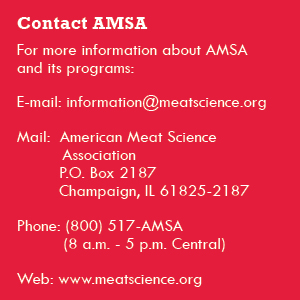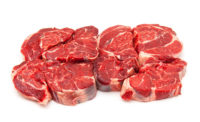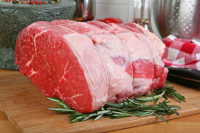
|
These consumer responses to the taste of beef, while some positive and others negative, evoke the question, “What is Beef Taste?”
Consumer sensory research has shown that beef taste is one of the most important factors influencing consumer satisfaction. Although consumers evaluate taste as the combined eating experience when they place a bite into their mouth and chew, scientists break taste down into categories.
Scientists define taste as the combination of beef flavor aromatics perceived due to volatile compounds stimulating the olfactory bulb; basic tastes of sweet, salt, sour and bitter on the tongue; mouth-feels, and after-tastes. It is apparent that beef flavor is tied into consumer acceptance and therefore, factors that affect beef flavor are more important to understand within the meat industry.
In response to the need to more clearly define beef flavor, scientists at Kansas State University and Texas A&M University have worked together to develop the Beef Flavor Lexicon that was funded through the Beef Checkoff.
The Beef Flavor Lexicon is a dictionary of terms that includes beef flavor attributes, a description of each attribute, and references to use as training aids in helping trained sensory panelists, product-development personnel, quality-assurance technicians or any technical person identify and scale for each attribute.
In the Sensory Analysis Center within the Department of Human Nutrition at Kansas State, Drs. Koushik Adhikari, Edgar Chambers IV and Laura Vazquez-Araujo, with graduate student Natnicha Bhumiratana, developed a beef lexicon containing 72 aroma and flavor characteristics. They used four major beef cuts from different quality grades and cooked them to five levels of doneness using either oven-roasting, oven-broiling, electric grilling, countertop electric charbroiling or braising cooking.
The beef cuts and samples were obtained by Dr. Rhonda Miler and Chrisly Philips of Texas A&M University. These cuts were then evaluated by six highly trained panelists in the Sensory Analysis Center. The scientific paper describing the study has been accepted for publication in the Journal of Sensory Studies in 2011.
Beef Identity or the amount of beef flavor identity in the sample is one attribute in the Beef Lexicon. Swanson’s Beef Broth would rate a 5 for Beef Identity on a 0 to 15 point Universal scale and beef brisket would rate an 11 on the same scale.
Brown/roasted also is defined in the lexicon as a round, full aromatic generally associated with beef suet that has been broiled. Broiled beef suet would rate an 8.0 and 80% lean ground beef would rate a 10 for brown/roasted flavor.
Some minor aroma/flavor attributes are included in the lexicon that most people would not associate with beef. For example, chemical is defined as the aromatics associated with garden hose, hot Teflon pan, plastic packaging and petroleum-based products such as charcoal liter fluid. For chemical, a Zip-Loc Sandwich bag has a 13.0 for chemical and Clorox in water is rated a 6.5.
Other attributes include Animal hair, Bitter, Bloody/serumy, Burnt, Cocoa, Cooked milk, Dairy, Fat-like, Green, Green-hay, Leather, Liver-like, Metallic, Overall sweet, Rancid, Salty, Sour aromatics, Sour dairy, Sour, Spoiled, Sweet, Umami, and Warmed-over. Twelve other minor notes were also included.
This lexicon was then validated by three trained descriptive sensor panelists at Texas A&M, University of Arkansas and the Roman L. Hruska US Meat Animal Research Center in Clay Center, Neb.
The purpose of this segment of the study was to see if three panels could apply the beef lexicon to a standard set of beef samples consistently. The beef lexicon, standard training examples and references, and companion testing beef samples were provided to each of the three panels. Each panel evaluated the beef samples independently.
While there were some slight differences in absolute intensity levels for specific attributes across the beef steaks and roasts, the beef lexicon was easily applied using the references and terms defined.
As a result, the beef industry has a new tool for understanding how beef flavor changes or is expressed across cuts, products or technologies. We have a uniform list of descriptors that can be replicated and discussed across government, academics or industry.
We can now talk the same language when we talk about beef flavor attributes and how to measure them. This tool will help us to identify why a consumer does not like the taste of their steak!




Report Abusive Comment